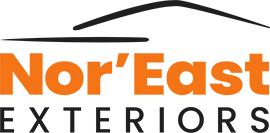Don’t Overlook Your Roof: The Importance of Regular Inspections
Whether it’s shielding you against storms or providing a comfortable covering for your cozy abode, your roof is an important part of your home that demands (and deserves) your utmost attention.
While investing in high quality roofing materials is a smart choice, there’s something to be said about conducting regular roof maintenance – namely, investing in periodic roof inspections.
After all, your roof is more than just the layer on top of your house. It’s the frontline defense against nature’s elements. However, like any part of your home, it needs frequent check-ups to spot signs of wear and tear. Regular roof inspections are the key to preventing small issues from ballooning into big, expensive problems.
Why You Should Prioritize Regular Roof Inspections
On the fence about whether roof inspections are worth the cost, time, and hassle? Here are a few good reasons to add them to your regular home maintenance schedule:
- Early Detection: A small leak can turn into a torrential problem inside your walls. Catching problems early can save you from high repair costs.
- Prevent Major Repairs: Addressing minor damage can mean the difference between a quick fix and a full-blown roof replacement.
- Peace of Mind: Knowing your roof is in good condition means one less worry on your mind.
- Insurance Compliance: Some insurers may have requirements regarding roof maintenance – staying proactive keeps you in compliance and saves you money.
Recognizing the Warning Signs: What to Look for During a Roof Inspection
Before you grab a ladder or pick up your phone to call in the professionals, you might want to know exactly what you should be looking for during a roof inspection. Your roof could be suffering silently from various issues that, if unnoticed, could lead to significant damage over time.
Here are the key indicators that suggest your roof might need some attention or repairs:
- Missing or Damaged Shingles: This is one of the most obvious signs of roof distress. Look for shingles that are cracked, bent, or entirely missing. These defects can allow water to seep underneath, leading to leaks and water damage inside your home.
- Curling Shingle Edges: Shingles that are curling at the edges are often a sign of age or excessive heat. Over time, this can lead to shingle brittleness and breakage.
- Moss or Algae Growth: While moss or algae on your roof might give it a quaint, green look, their presence can be harmful. They hold moisture against the roof surface, potentially rotting or degrading shingles over time.
- Granules in the Gutters: Asphalt shingles shed their granules over time, especially if they are old or damaged. Finding a significant amount of granules in your gutters could indicate that your roof is nearing the end of its useful life.
- Sagging Roof Deck: If the decking of the roof is sagging or appears warped, it could mean there is trapped moisture causing rot. A sagging roof is a serious issue that requires immediate attention.
- Signs of Water Damage Inside: Sometimes, the first sign of a roof problem isn’t on the roof itself. Stains, mildew, and mold growth on your home’s ceilings or walls could indicate a leaky roof.
By recognizing these warning signs early, you can take proactive steps to address roof issues before they escalate into more severe problems.
The Hidden Costs of Neglecting Your Roof
Neglecting roof inspections can lead to a myriad of issues, many of which homeowners may overlook until it’s too late. The significance of catching these problems early cannot be overstated.
Here’s a closer look at some of the hidden costs associated with delaying or disregarding routine roof checks:
- Water Damage: A compromised roof can lead to water intrusion, causing mold and structural damage.
- Energy Drain: Poorly maintained roofs can contribute to energy loss as heat escapes through gaps and compromised areas. This can lead to higher energy bills as your heating or cooling systems work harder to maintain a comfortable temperature indoors.
- Early Replacement: Lack of maintenance can slash years off your roof’s lifespan, leading to costly replacement.
- Safety Hazards: A damaged roof can present real dangers like collapses or falling debris.
Timing is Everything: When to Schedule Your Roof Inspections
Regular inspections not only catch issues early on but also save you money and stress in the long run. Here are some key considerations for scheduling your roof inspections:
- Frequency: An annual inspection is a good rule of thumb, but following severe weather, an extra check might be wise.
- Seasons Matter: Spot checks in Spring or Fall can head off problems exacerbated by extreme weather.
- Roof Age: If you know your roof’s older, it may need more frequent looks to spot potential issues.
Finding the Right Professional: Tips for Choosing a Reliable Roofing Contractor
Not all contractors are created equal, and the quality of workmanship can vary quite significantly.
Here are some tips that can guide you in choosing a professional for your residential roof who meets your needs and exceeds your expectations.
- Licensed and Insured: Make sure the contractor meets these basic professional standards.
- Read Reviews: Past customer experiences can provide insights into reliability and quality.
- Warranty Wisdom: Understand what’s guaranteed – and for how long.
- Get it Written: A detailed inspection report provides a blueprint for any required maintenance.
Invest in Your Home’s Longevity with Roof Inspections
Regular roof inspections aren’t just a chore – they’re an investment in the well-being of your home that pays dividends in the long run. They safeguard against unexpected repairs, extend the life of your roof, and secure peace of mind.
Don’t wait until it’s too late. Take preemptive action to protect your home.
Ready to give your roof the care it needs? Visit Nor’East Exteriors to schedule your inspection or learn more about our services. Your roof – and wallet – will thank you.
